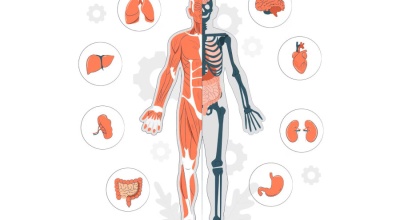A popular way to celebrate holidays or any party occasion is to invite friends and family to a buffet. However, this type of food service where foods are left out for long periods leave the door open for uninvited guests — bacteria that cause foodborne illness. Follow these easy tips for food safety when entertaining. With proper preparation, you can be creative and tempt your party guests with an array of fun platters while still keeping food safety in mind!
Buy, Store & Serve Safe Food
A good safety tip to keep in mind all year, not just in the holiday season: Follow the directions on your ready-to-cook food packages to help keep yourself and your loved ones healthy.
Holiday Food Safety
Holiday Food Safety downloads, shopping checklist, food safety tips, and children's activities shows how to store, prepare, and serve food safely to prevent foodborne illness from ruining the holidays. Follow these easy steps:
CLEAN: Wash hands and surfaces often
SEPARATE: Separate raw meats from other foods
COOK: Cook to the right temperature
CHILL: Refrigerate food promptly

Size Matters
If you are planning a buffet at home and are not sure how quickly the food will be eaten, keep buffet serving portions small.
- Prepare several small platters and dishes ahead of time and replace the serving dishes with the fresh ones throughout the party.
- Store cold back-up dishes in the refrigerator and keep hot dishes in the oven set at 200 °F to 250 °F prior to serving. This way, your late arriving guests can safely enjoy the same appetizing arrangements as the early arrivals.
Take Temperatures
Hot foods should be kept at an internal temperature of 140 °F or warmer.
- Use a food thermometer to check. Serve or keep food hot in chafing dishes, slow cookers, and warming trays.
- Be aware that some warmers only hold food at 110 °F to 120 °F, so check the product label to make sure your warmer has the capability to hold foods at 140 °F or warmer. This is the temperature that is required to keep bacteria at bay!
- Eggs and egg dishes, such as quiches or soufflés, may be refrigerated for serving later but should be thoroughly reheated to 165 °F before serving.
Chill Out
Cold foods should be kept at 40 °F or colder.
- Keep cold foods refrigerated until serving time.
- If food is going to stay out on the buffet table longer than 2 hours, place plates of cold food on ice to retain the chill.
Keep It Fresh
Do not add new food to an already filled serving dish.
- Instead, replace empty serving dishes with freshly filled ones.
- Be aware that during the party, bacteria from people’s hands can contaminate the food. Plus, bacteria can multiply at room temperature.
Watch the Clock
Remember the 2-Hour Rule: Discard any perishables left out at room temperature for more than 2 hours, unless you are keeping it hot or cold.
- If the buffet is held in a place where the temperature is above 90 °F, the safe holding time is reduced to 1 hour.
- Watch the clock with leftovers, too! Whether you are sending “doggie bags” home with guests or are saving them for yourself, leftovers should be refrigerated as soon as guests arrive home and/or within 2 hours!
Adapt “Old Family Recipes” Safely
Some of your favorite traditional recipes may call for raw or lightly cooked eggs. These may include homemade Caesar salad dressing, ice cream, custards, rice pudding, chocolate mousse, eggnog, and some sauces.
However, some raw eggs can contain harmful bacteria. These can be particularly dangerous when consumed by those at higher risk for foodborne illness – such as pregnant women, young children, older adults, and those who may have a weakened immune system because of organ transplants or diseases like diabetes, cancer, or HIV/AIDS.
Help keep your party guests safe by adapting your favorite egg containing recipes (or substituting prepared products for some items). Here is how:
- Add the eggs to the amount of liquid called for in the recipe, then heat the mixture until it reaches 160 °F on a food thermometer.
OR
- Use store-bought products of the foods listed above, which are often already cooked or pasteurized. (Check the label to be sure.)
OR
- Purchase pasteurized eggs. These eggs can be found in some supermarkets and are labeled “pasteurized.” Here are several types consumers can buy:
- Fresh, pasteurized eggs in the shell (found in the refrigerator section).
- Liquid, pasteurized egg products (found in the refrigerator section).
- Frozen, pasteurized egg products (found in the frozen food section).
- Powdered egg whites (found in the baking section).
Video: The "Game Day" Food Action of Two Parties
Spoof of a Sunday Afternoon Sports show highlighting the importance of using the nutrition facts label to control portions, fat, calories and percent daily value. Two studio "sports announcers" describe the "game day" food action of two parties: the first, a TV football game gathering and the second, a traditional sit-down dinner. Using the Nutrition Facts Label as their scorecard and the 5-20 Rule as their guide, the two announcers bounce back and forth between the action at the two sites, comparing serving sizes, ingredients and overall food choices in this "Battle of the Dueling Dinner Parties". Produced by CDRH-TV for U.S. Food and Drug Administration CFSAN Read More
Information and Resources
Download Food Handling Fact Sheets
Download a quick overview for staying healthy and free from food poisoning when getting takeout, delivery or dining out. A reference guide of invaluable information on meal prep, shopping, and storage lists of DOS and DON’TS food safety from the grocery cart to the refrigerator
FoodSafety.gov Charts: Food Safety at a Glance
How long can you store leftovers in the refrigerator? How can you tell when chicken breasts are done? How long does it take to cook a turkey? Check out these charts for fast answers.
Storing Food Charts
Storing Food
Whether putting food in the refrigerator, the freezer, or the cupboard, you have plenty of opportunities to prevent foodborne illnesses.
Preparing and Cooking Food Charts
Preparing and Cooking Food
One of the basics of food safety is cooking food to its proper temperature. Foods are properly cooked when they are heated for a long enough time and at a high enough temperature to kill the harmful bacteria that cause foodborne illness.
FoodSafety.gov: FoodKeeper App
The FoodKeeper helps you understand food and beverages storage. It will help you maximize the freshness and quality of items. By doing so you will be able to keep items fresh longer than if they were not stored properly. It is also available as a mobile application for Android and Apple devices.
Public Downloads
All items are free to view, share, and download.
Public Downloads - Español (Spanish)
When available, we provide all our content with a Spanish version in our public download section. You can find additional material from sources listed in all our articles.
Download Food Safety Activities, Coloring Sheets, Infographics and Videos
Food Safety Educational Downloads
Download Food Safety Activities
Download Food Safety Activity Sheets
Download Food Safety Coloring Sheets
Download Food Safety Videos
Download Food Safety Educational Infographics
Download Handwashing Activities, Worksheets, Posters and Videos
Handwashing Educational Downloads
Download Handwashing Activities
Download Scrub Club Activity Worksheets
Download Handwashing Educational Posters
Video Playlist: Food Safety and Nutrition












Fresh and Frozen Seafood: Selecting and Serving it Safely














